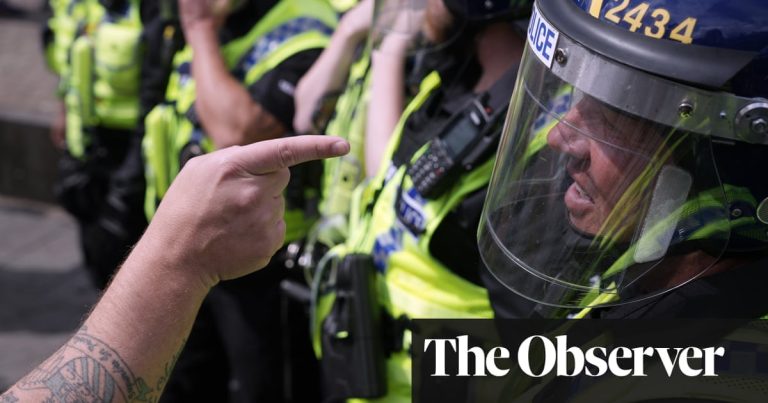From Dunblane’s Unity to Southport’s Division: How Social Media Fuels the Flames of Outrage
The 1996 Dunblane massacre, a horrific act of violence that claimed the lives of 16 children and their teacher, stands as a stark reminder of a different era in public response to tragedy. The national outpouring of grief and revulsion swiftly translated into tangible action, with a massive petition and subsequent legislation banning handguns. Fast forward nearly three decades, and the recent violence in Southport, sparked by rumors circulating on social media and anti-immigrant sentiment, paints a drastically different picture of public reaction. Instead of unity and a collective call for change, the incident ignited a wave of online outrage, misinformation, and ultimately, physical violence. This stark contrast reveals a profound shift in how we communicate, process information, and react to events, a shift largely driven by the pervasive influence of social media.
The core difference between the post-Dunblane response and the current climate lies in the transformation of our information ecosystem. In 1996, information dissemination was slower, more deliberate, and largely controlled by established media outlets. Today, social media platforms, driven by algorithms designed to prioritize engagement and virality, often amplify the most extreme and emotionally charged content. This creates a feedback loop of outrage, where shocking and divisive narratives gain traction, further polarizing public opinion and potentially inciting real-world violence. Experts, including Nobel laureate Maria Ressa, argue that these platforms are not merely reflecting existing societal divisions but actively exacerbating them, effectively transforming social media into a "polarisation engine."
Ressa highlights the role of social media in mainstreaming violence, drawing parallels between the Southport unrest and the January 6th Capitol attack. She argues that the ability of individuals with extremist views to connect, organize, and reinforce each other’s beliefs online has significantly lowered the threshold for real-world action. This phenomenon, she explains, is amplified by the nature of algorithms that prioritize emotional content, creating a self-perpetuating cycle of radicalization that extends beyond fringe groups and increasingly affects the general public. The rapid spread of disinformation through these platforms, combined with the emotional nature of the content, creates a volatile mix that can quickly escalate into physical confrontation.
This "alternative information ecosystem," comprised of platforms like Telegram, Bitchute, Parler, and Gab, plays a significant role in incubating and disseminating extremist ideologies. These platforms often operate outside the purview of mainstream media and traditional social media oversight, providing a fertile ground for the spread of misinformation, conspiracy theories, and hate speech. The events in Southport demonstrate how these fringe narratives can spill over into the mainstream, mobilizing individuals to take action based on false or distorted information. Experts emphasize the interconnectedness of the online and offline worlds, urging policymakers to recognize that what happens online has tangible consequences in the physical realm.
The rise of the far-right in the UK, coupled with the "replatforming" of controversial figures on platforms like X (formerly Twitter), has contributed to a climate of increasing polarization. While researchers and policymakers are becoming increasingly aware of the problem, concrete solutions remain elusive. The lack of effective regulation and enforcement against social media platforms allows harmful content to proliferate, exacerbating societal divisions and potentially inciting violence. Experts warn that this inaction has serious long-term consequences, likening the addictive nature of disinformation to that of cocaine, progressively altering individuals’ perceptions and behaviors.
Despite acknowledging the threat of far-right extremism, authorities have been slow to address the underlying technological issues driving its spread. The delayed recognition of the weaponization of social media, evident in the recent media coverage of a single suspicious account on X, highlights the ongoing struggle to grapple with the complexity of online disinformation campaigns. This slow response is further compounded by a lack of understanding of the global nature of the phenomenon and the similarities between far-right movements in different countries. The far-right’s adeptness at exploiting algorithmic biases and leveraging powerful emotions like anger, fear, and outrage to amplify their message poses a significant challenge to democratic discourse and social cohesion.
The question remains: how can we effectively counter the spread of online hate and misinformation? Experts call for a comprehensive approach that goes beyond reactive measures. Strengthening regulations, enforcing existing laws against incitement to violence, and promoting media literacy are crucial steps. However, addressing the deeper structural issues related to the design and operation of social media platforms is essential. This requires a "grown-up conversation" about the power and influence of digital technology, one that acknowledges the complex interplay between online and offline realities and seeks to build a more resilient and informed society. The events in Southport serve as a stark warning of the potential consequences of inaction, urging us to confront the challenges of the digital age before further tragedies unfold.


